Autobiography
Growing up, I was a dancer. I started when I was 5, but unfortunately had to quit when I was 17 because of a back injury. Dance was my passion, and I easily handled my academic-heavy course load and my 15+ hours per week of dance in high school. I loved dance because it allowed me to express myself, and gave me a lot of self confidence. My identity was completely wrapped up in my dancing and my academic successes. I liked what I was good at, and I was good at what I liked.
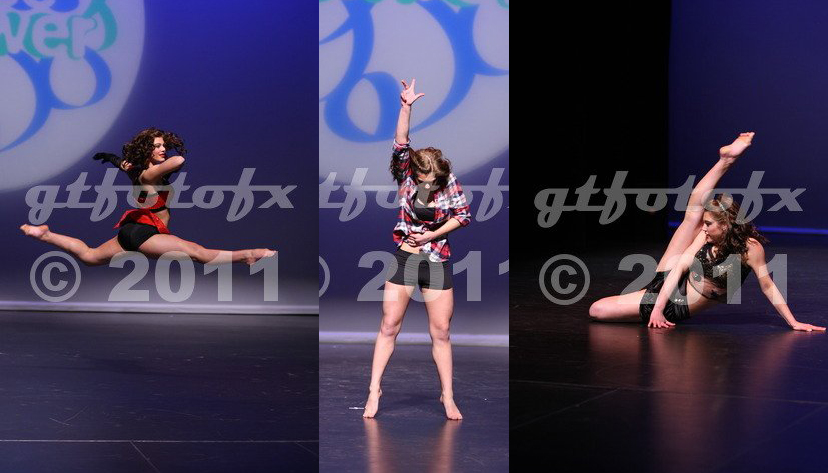

Part of the reason why I loved dance so much is because I was good at it. It’s not that I never struggled in dance, because I often did, but usually if I was struggling, so was everyone else. When it came to academics, I had an extremely fixed mindset and thought that if I didn’t understand something right away, I was a failure and wanted nothing to do with it. I had absolutely no skills when it came to asking for help, and experiencing academic challenges (Chemistry 11 and 12) was extremely emotionally difficult for me.
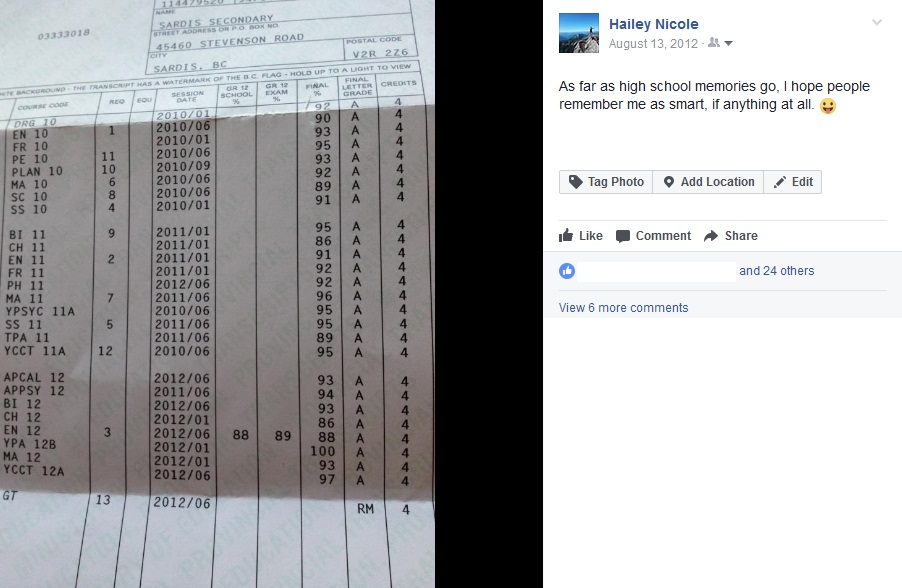
It was through dance that I got my first opportunity to work with kids in a leadership/teaching capacity. When I was in grade 9, I started assisting my dance teacher with some of the younger classes. I was apprehensive at first because I wasn’t sure that I liked kids, but I quickly discovered that I really liked teaching. I especially liked teaching private lessons one-on-one. I loved sharing my knowledge and passion with students who were younger than me and who I knew looked up to me as a role-model.
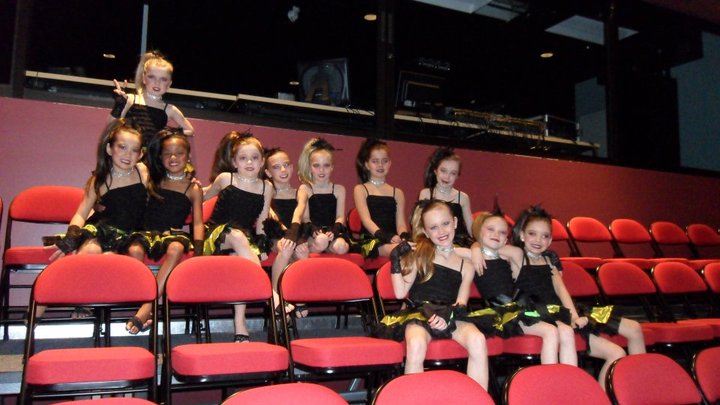
When I started my undergrad at UBC, I thought that I wanted to be a dietitian. In high school, my brother went through cancer treatments at Children’s Hospital, and I got to be present for one of the meetings with his dietitian. I thought that her job seemed so important, and I was impressed with her knowledge. I noticed that many dietitians had offices in the psychiatric ward of the hospital, and learned that some of them worked with children who had eating disorders. I decided then and there that that is what I wanted to do with my life.
In my second year of being in the Faculty of Land and Food Systems, I went to an information session on applying for UBC’s prestigious Dietetics program. The speaker asked us how many of us were passionate about nutrition, and everyone in the auditorium raised their hand, myself included. The next question was, “How many of you are passionate about helping people?” and I didn’t immediately raise my hand, but I did when I saw that everyone else did. It was a rhetorical question with an obvious answer, but it wasn’t obvious to me at the time. I thought long and hard about this experience, and realized that I was passionate about helping children, and sharing my knowledge with them, and I realized that teaching would be the best avenue for me in which to do this. In the time between then and graduation, I spent 3 consecutive summers working as a program facilitator for the Chilliwack Community Arts Council teaching art and cooking classes to 2-12 year olds, and 6 months teaching an after school cooking program through West One Community Schools.
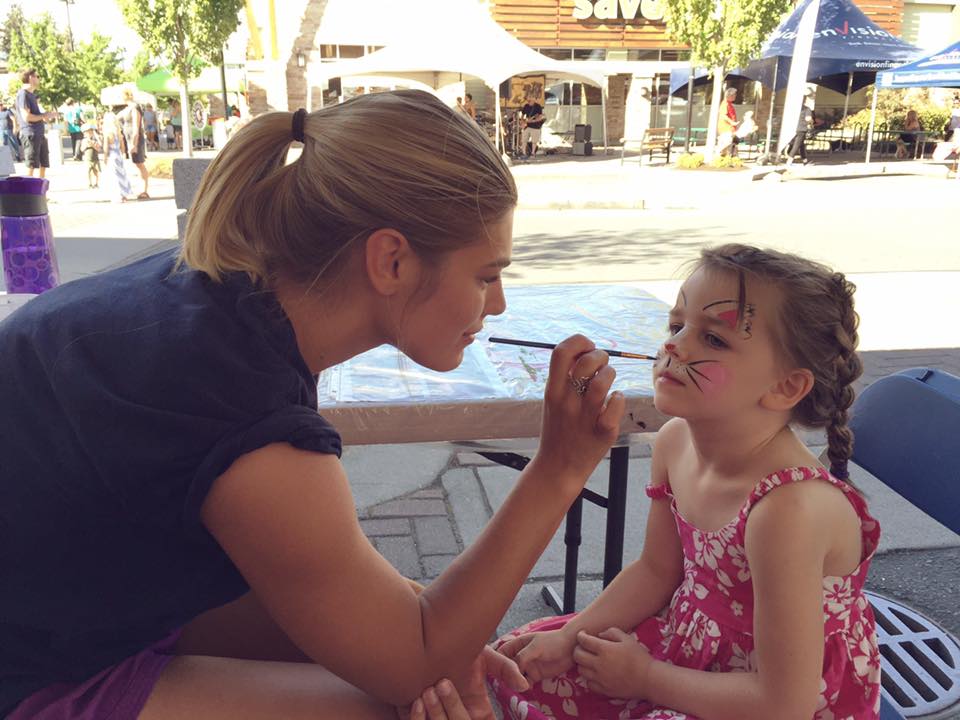
…
At the beginning of this program, I was mildly terrified for what the year had in store for me. I knew that I loved teaching, but I didn’t know how I was going to become an actual teacher. I was reserved, quiet, and shy, and was too anxious to participate in class discussions. When I did have an idea that I thought might be good to share, the anxiety I had would prevent me from ever raising my hand. I would be nervous for every group presentation despite the amount of time that I spent practicing what I needed to say. The idea of practicum looming ahead of me kept me from sleeping some nights. I’m an anxious person to begin with (I have generalized anxiety disorder), and the stress and pressure of this program was pushing me to my limits. I now recognize that I still had somewhat of a fixed mindset of intelligence and capabilities, and I wasn’t confident that I had the qualities required to be an effective educator.
Among all of this stress, in my textiles methodology course, we were tasked with crocheting a hat, and I had never crocheted anything in my life before that time. We learned how to make a slip knot and start chaining during the first class, and for the life of me I could not get it. Because I couldn’t do it right away, I got extremely frustrated and upset, to the point where I needed to leave the room for a few minutes. It represented one more thing that I couldn’t do right away; that I wasn’t a natural at. My initial failure was really discouraging for me, especially when I could see that some of my peers were picking it up quicker than I was. If this was something that I was trying to learn on my own, I may have given up at that point. However, because this was a skill that I needed to complete a project for the class, I turned to YouTube to break down the required steps. Because I was alone, and I could learn it at my own pace by pausing and rewinding the video as often as I needed to, I was able to relax and eventually create a chain. This was a powerful learning experience for me, because it made me realize that my own students might not understand what I’ve taught them the first time, and that this would be something that I would need to remember for the rest of my career.
With my newfound excitement over being able to chain, I started crocheting everywhere – the bus, classrooms, hallways, in the car, etc. After what felt like 30 tries, I was able to start crocheting my hat by chaining 6 and slip stitching to join.
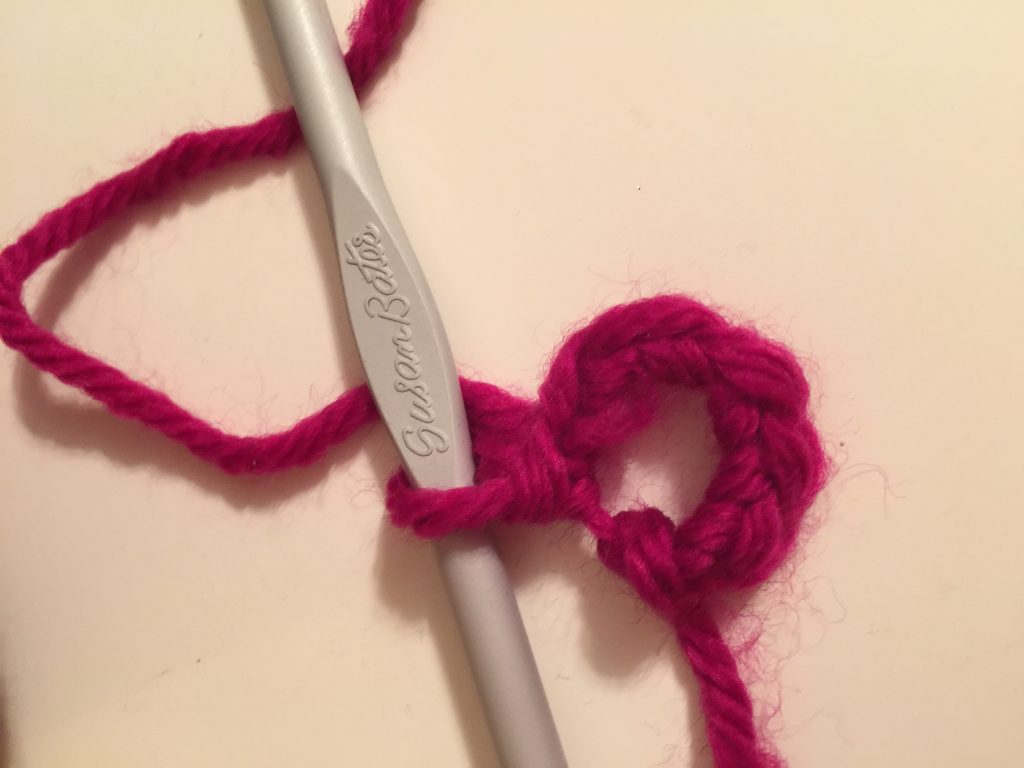
From there, I totally butchered the pattern, and ended up with something that looked like a pancake, rather than a hat.
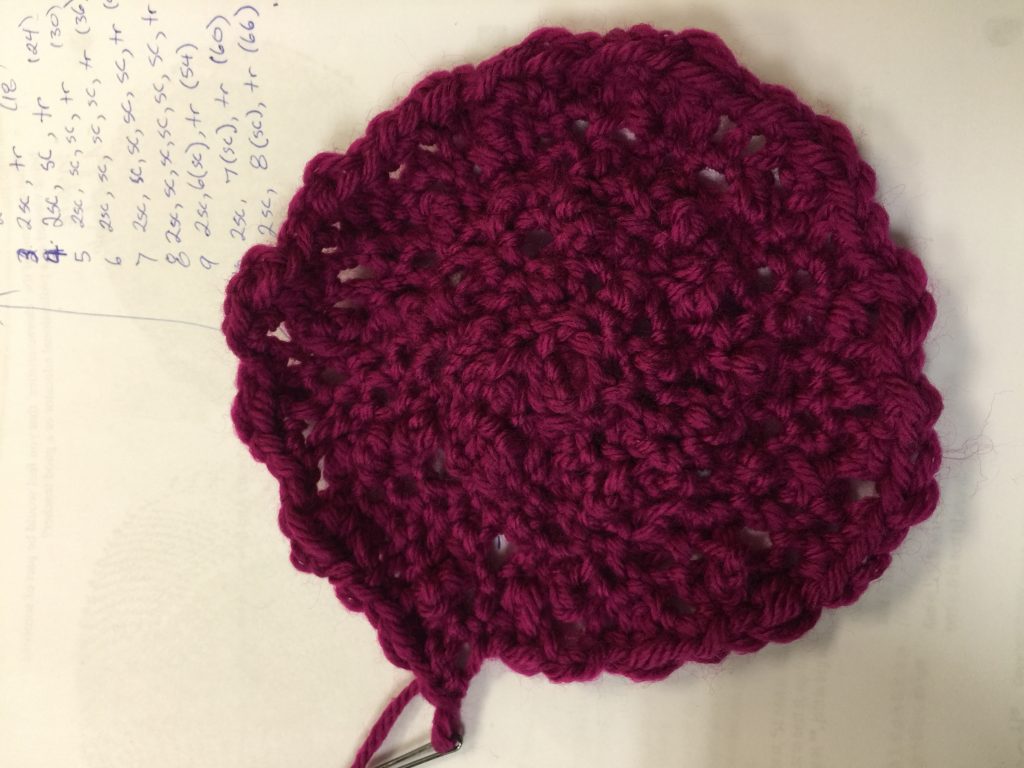
What I ended up doing was drawing out what the pattern was asking me to do, which really helped me visualize the steps required. I eventually finished my hat, but noticed several flaws in it, so I decided to make a “final version” to hand in with yarn that I picked out myself. I completed this final hat with ease, way before the deadline. Throughout this process, I had discovered that crocheting had become an outlet for me to express my creativity and actually helped me manage my anxiety.
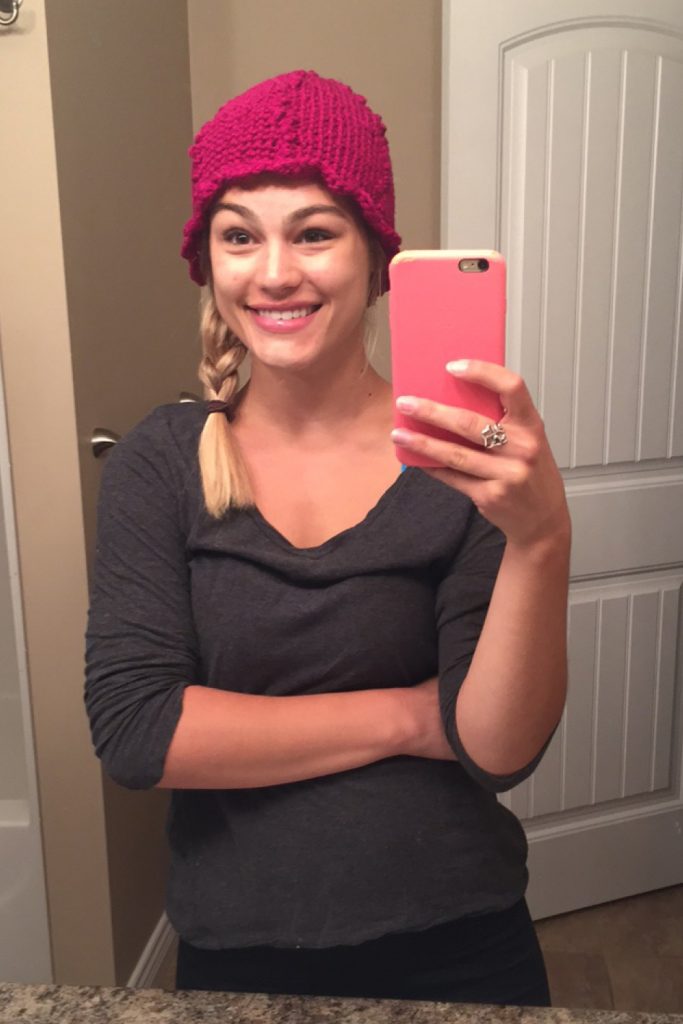
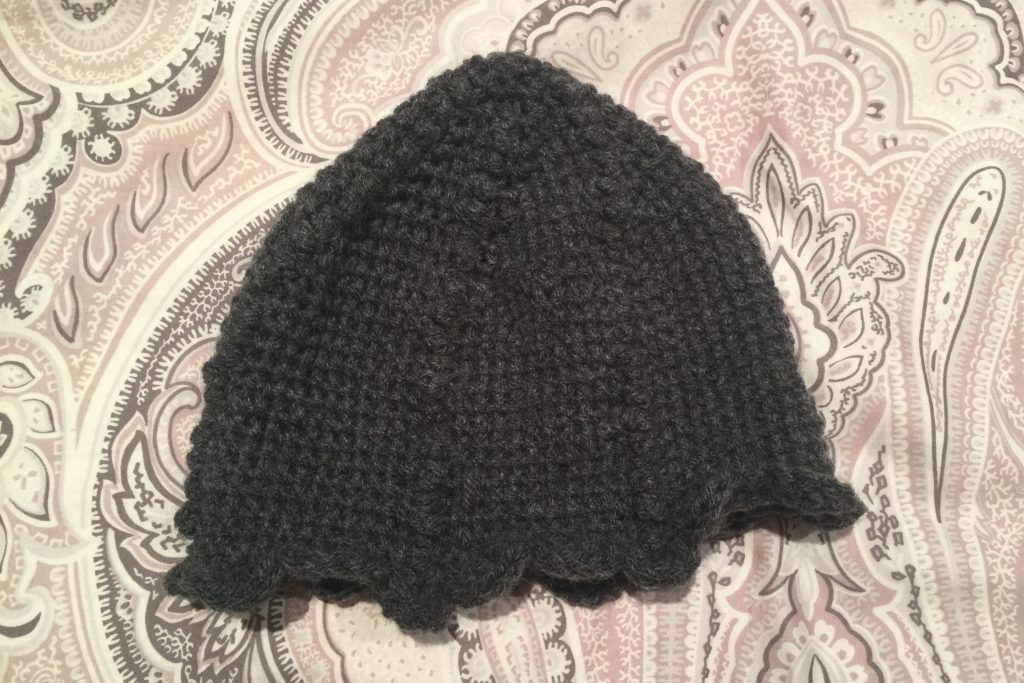
After this, I wanted to try making projects that I thought that I would be “good” at, such as a scarf and headband. I was still embarrassed that I struggled with the hat so much, so I wanted to boost my confidence a bit by trying easy projects.
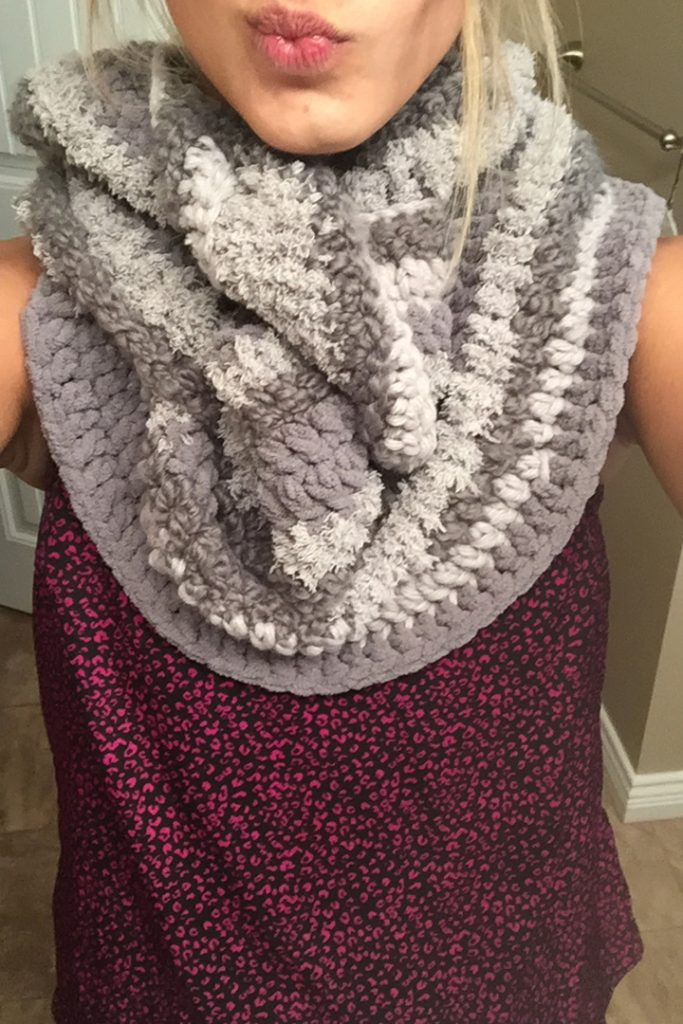
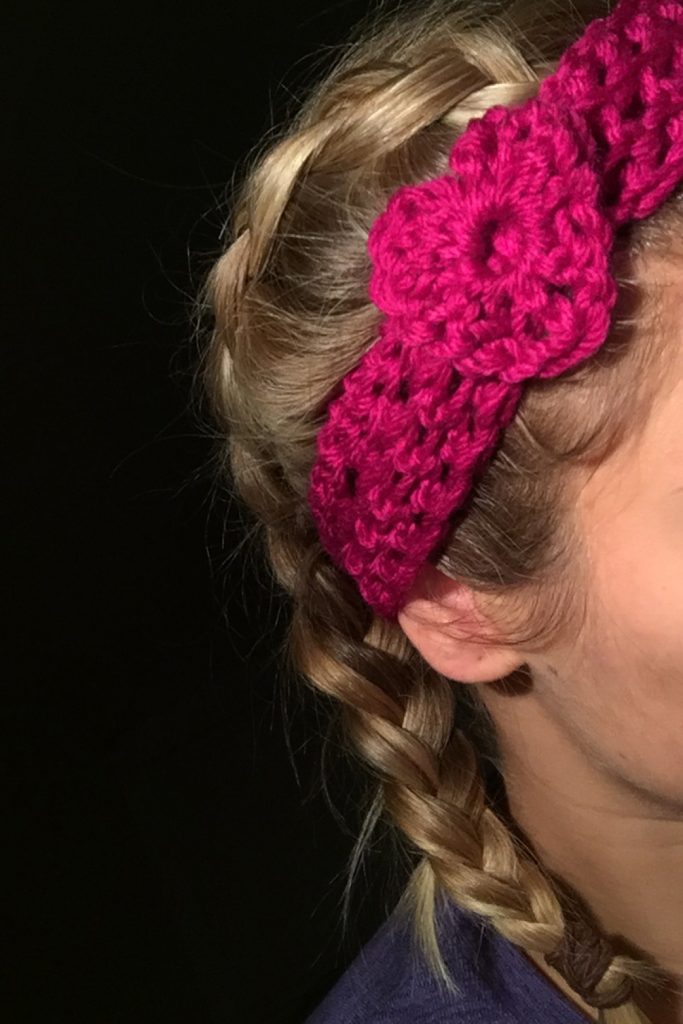
By the time Christmas rolled around, I was obsessed with crocheting, and thus began my “inquiry” into the art. I was able to make many gifts for my friends and family members. In order to do this, I had to spend a lot of time researching patterns, sourcing materials, and learning new stitches. I loved that I was able to share my new passion with my loved ones.
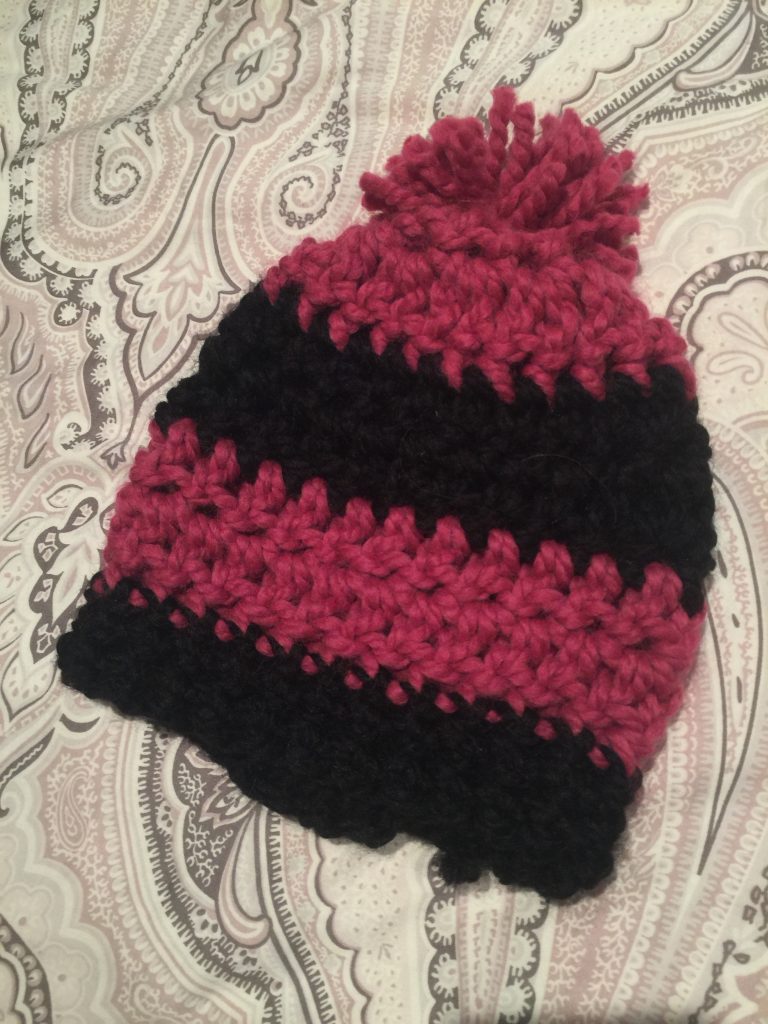
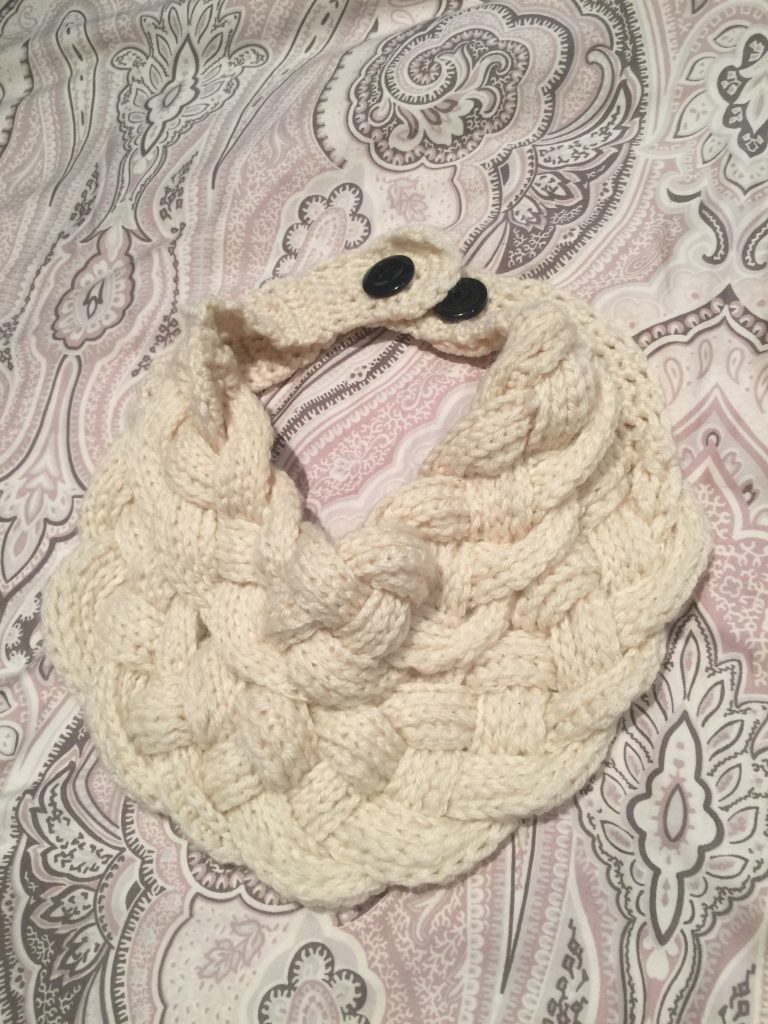
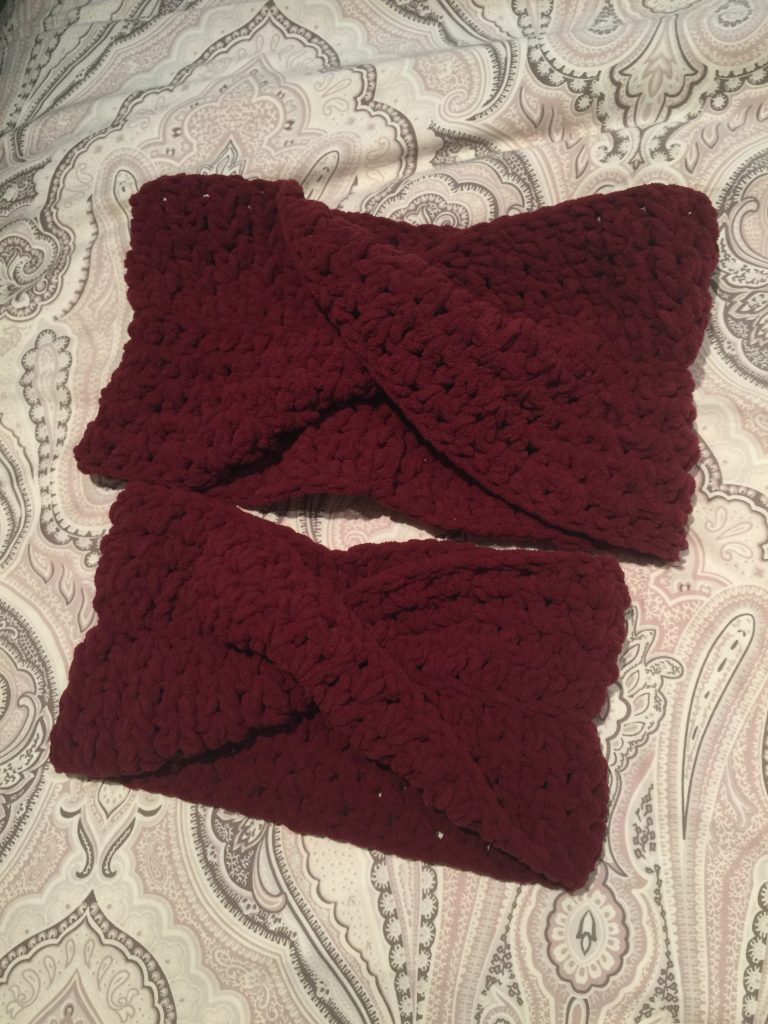

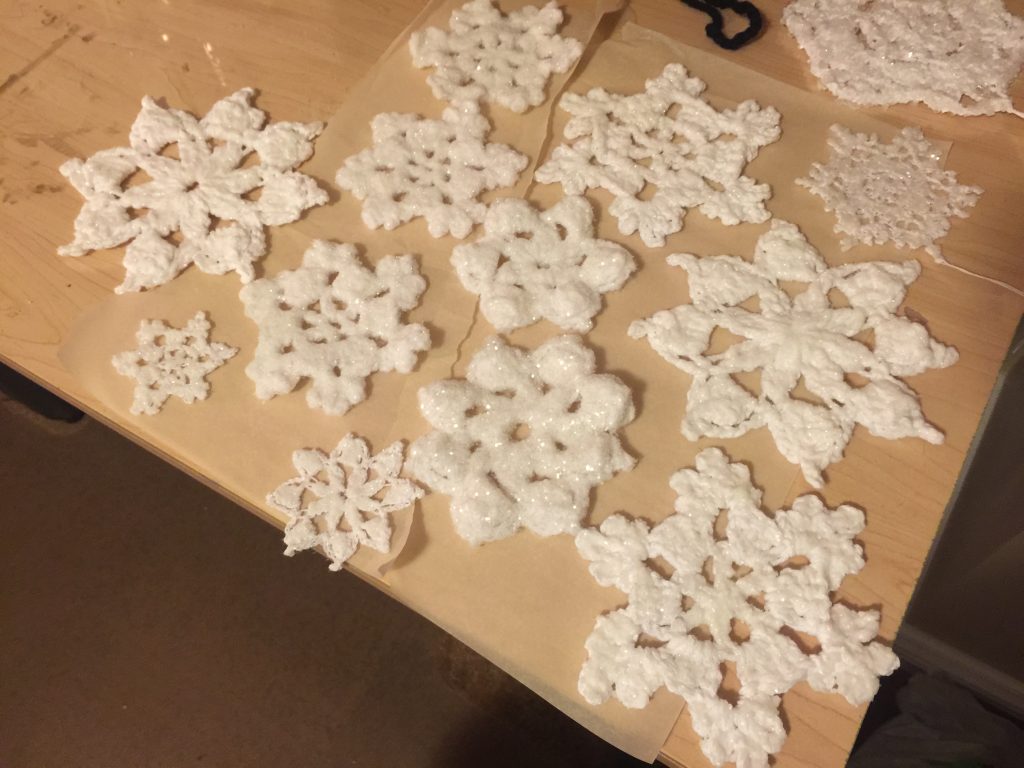
During my practicum, I began noticing changes in my beliefs, personality, and how I thought about myself in general. What I was gaining was confidence in myself and my abilities, because of the growth that I was experiencing. As I was approaching the midpoint of my practicum, and the intensity was increasing, I knew that I needed a creative project to escape into at night. I began researching patterns for crochet bikinis, found one that I liked on Etsy, purchased it, and dove in. I had to research which yarn would be best for something that could potentially get wet, and then find that yarn in a colour that I liked at a good price. (Side note: the bikini that I made still hasn’t gotten wet). I had so much fun making the bikini and imagining wearing it on the beach in Cuba. The pattern itself had some problems, so after I finished my bikini I went back through the pattern and added in the adjustments I should make if I were to make the bikini again. I didn’t quite finish it in time for my trip (the bottoms that I made were unwearable, and I had to make new ones) so I had to finish the bottoms and create the lining in my hotel room. The lining that I went with was fabric from an old dance bodysuit that I had lying around, and was not the best choice. I know that now. Overall, I was pretty happy with my first attempt at a more complicated pattern.

After I finished the piece, I realized that I had no anxiety about making mistakes on any of my projects, because they can be easily ripped out and fixed. This led me to attempt even more complicated pieces with no pattern at all. I took inspiration from garments on Pinterest, and tried to come up with my own versions. These pieces were very labour intensive, and involved a lot of trial and error, but I am very pleased with how they turned out. It also helped that during this time I was doing my Community Field Experience, and thus had a lot of free time.

Finally, I’m so excited with where I’m at with crochet right now. I’ve been making summer tops inspired by photos that I’ve seen online. I can make sample swatches and do the math to figure out what I need to do in order to create certain looks. I’m not concerned with making mistakes, and I’ve completely let go of any worries surrounding creating new pieces. I’ve also started to work with higher quality yarns, and I feel good about investing in myself and my abilities. I’ve learned so many methods for fixing errors that I feel free to experiment. I’ve also gotten a lot better at creating linings for the tops, and hand sewing them in neatly.
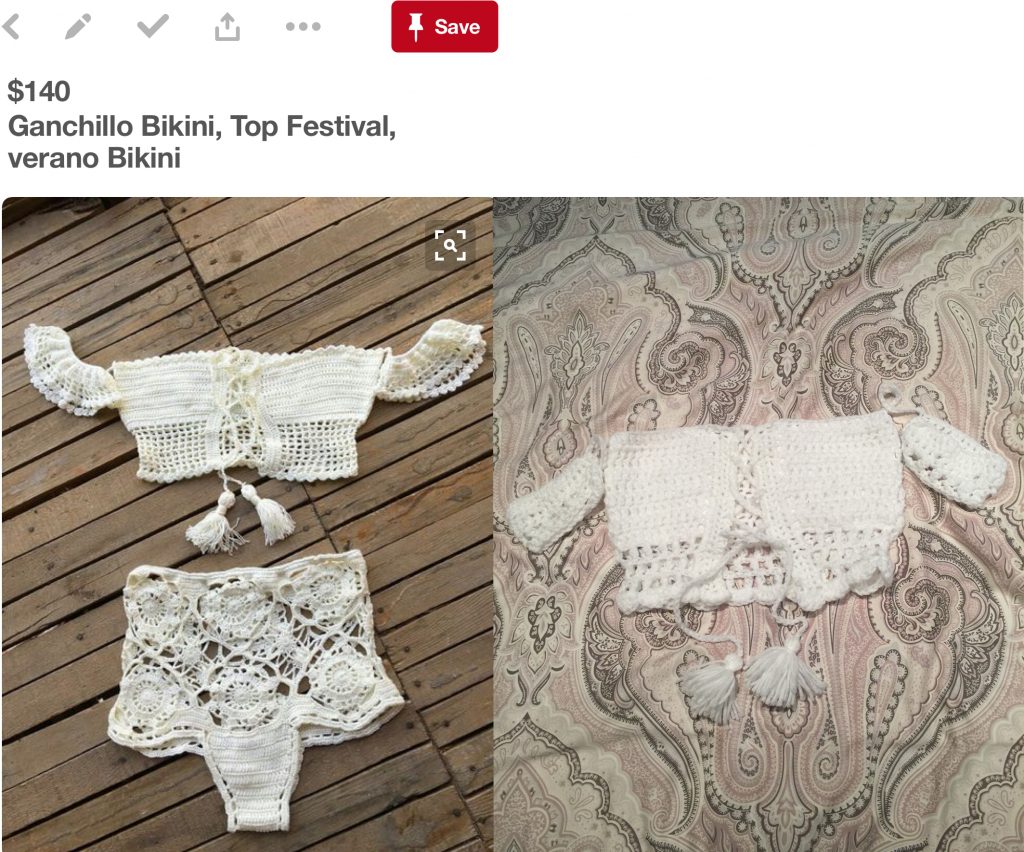
Philosophy
My philosophy of teaching is above all else to ensure that my students develop skills and strategies to succeed not only in my class, but in many other areas of life as well. I believe that the purpose of education is to prepare students to be critical consumers of knowledge in their everyday lives. I want my classroom to be a safe place where my students can feel free to explore their inquiries and make mistakes. I want my students to feel free to take risks, because making mistakes and being able to explain why they happened is a very valuable learning process. I aim to engender a desire for life-long learning in my students, and guide them on how to think critically in order to facilitate this learning.
Pedagogy
In order to facilitate these experiences for students, I have to be comfortable with being uncomfortable, being wrong, and making mistakes. As someone who used to have a fixed mindset of intelligence, this has been a challenge for me, and probably will continue to be a challenge for me despite the progress that I’ve made. I am however, committed to the learning process, and hope to invite my students along with me. I can empathize with the students who are terrified of making mistakes, and even though I probably can’t change that, I want to create opportunities for them where making mistakes isn’t detrimental.
For example, students often ask the question, “Is this good?” in regards to food that they’ve made and garments that they’ve sewn. Instead of comparing their work to certain standards (e.g. muffins with a rounded bumpy top), I could ask, “Do you like it?”, “How do you think you did?” “Would you wear it?” “Is it still functional?” “Does it taste good?”. An apron with crooked stitches can still protect you while you’re cooking. As long as the student followed the directions, included all of the components, and is satisfied with their product, I’m satisfied too. This, coupled with asking the question, “If you were to make this again, what would you change”, or “What do you want to focus on improving for the next project?” can promote a growth mindset in students. If flakey, golden brown sides are an important element of a good biscuit to a student, they will learn how to take the steps necessary in order to ensure that their biscuits turn out with flakey, golden brown sides. If straight stitches are important to a student, they will take the time to make sure that they are sewing slowly and carefully.
For a book club during my CFE, I read a book called Fish in a Tree by Lynda Mullaly Hunt. It’s about a grade 6 student who struggles with dyslexia, but has a new teacher who’s determined to help her learn to read. He points out to her that just as there are many different routes she can take to bike home from school, there are many different paths one can take when learning something new. This idea really stuck with me, and has affirmed my beliefs that there isn’t only one correct way to achieve a certain outcome.
Inquiry/Goals for the Future
With all that being said, I want to encourage my students to engage in their own inquiry, and find something that they can really throw themselves into. With a growth mindset, students can remain thirsty for knowledge, and seek this learning out on their own without prompting. For example, a student who takes food studies and is genuinely interested in sports nutrition because she is an athlete, probably spends a lot of her free time researching sports nutrition. The student also probably doesn’t view this research as work, because having the knowledge improves her life in a meaningful way. This is an area where life-long learning can occur, as her dietary needs change throughout her life. I want to encourage this type of inquiry in all of my classes, and I will find a way to build it into my curricula.
My initial inquiry question from Inquiry I was “How can I respectfully implement culturally responsive pedagogy in my classroom?”. Because I wasn’t truly passionate about this question, I didn’t spend much of my own time researching the topic outside of the courses. I did however, start to explore how I could incorporate inquiry into my classes. This is a question that is ongoing for me, and right now I am in the research stage. Once I have my own classes, I can experiment with different methods of implementing inquiry, seeing what works, and continually refining the process. Going back to learning the art of crochet, I spend so much time learning how to do new things, and it never feels like work. I love what I’m doing, it feels like a safe medium through which to take risks and try new things, and I can accept when things don’t work. I try a different avenue through which to achieve the result I desire.
Moving forward, with more experience, I will become more confident in my abilities and will learn to trust my professional opinions. I will speak up and offer my suggestions more often as I become increasingly more comfortable in my surroundings. I will continue to build my textile skills at home by testing potential projects and asking more experienced sewers questions when necessary.